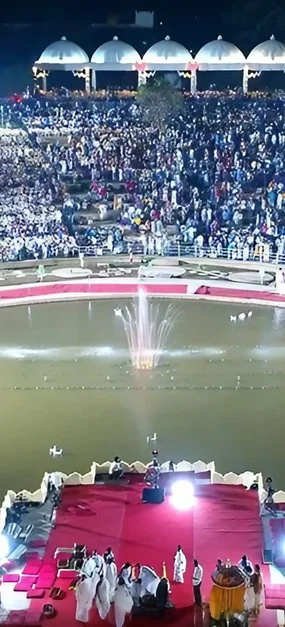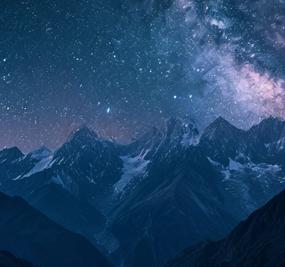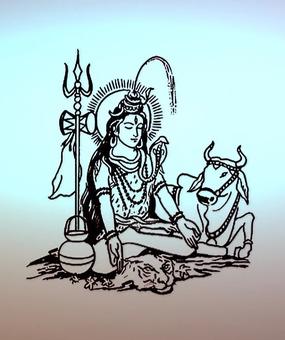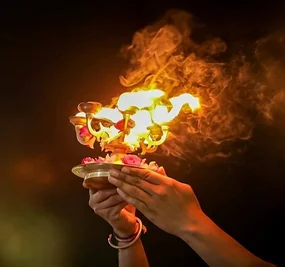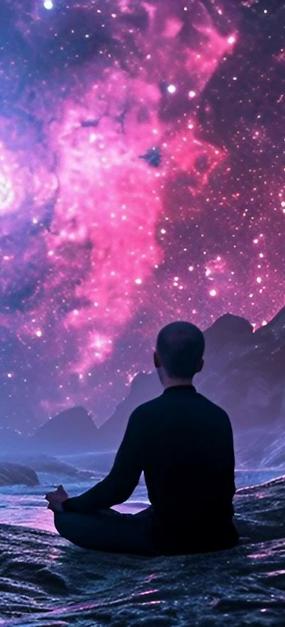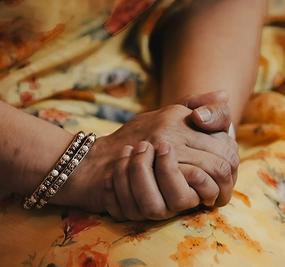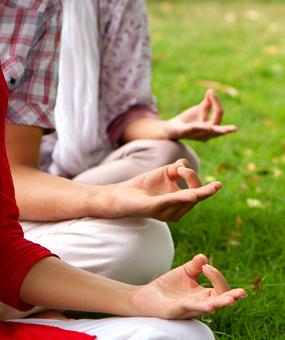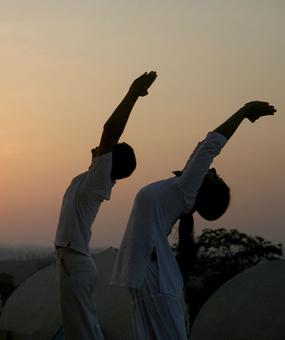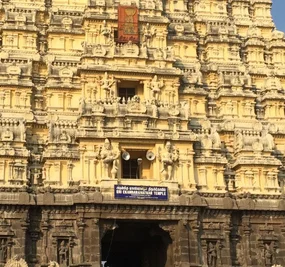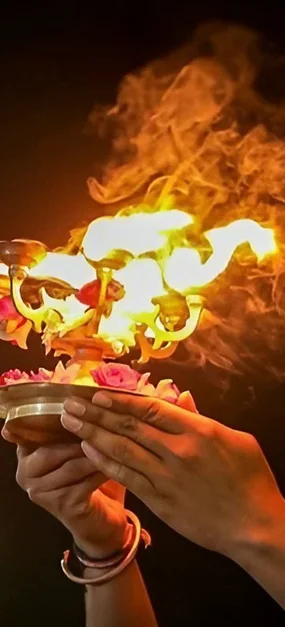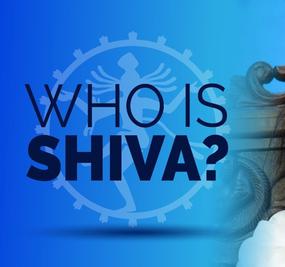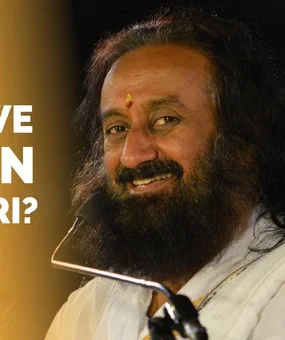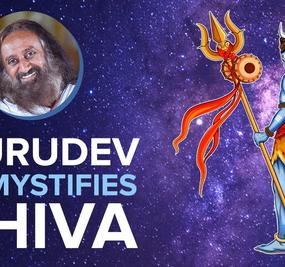
Lord Shiva has a unique form. He is depicted with embellishments from nature. He has a snake wrapped around his neck, and a tiger skin to cover his body. While a crescent moon decorates his head, Ganga flows from his tresses. His whole body is covered with sacred ash. He is also shown wearing a rosary of beads, or rather seeds belonging to the Rudraksha tree, creating much curiosity among believers.
What is the Rudraksha tree?
Rudraksha tree is known as Elaeocarpus ganitrus. It is a large evergreen tree that usually grows in a subtropical climate. This tree is mainly found in the foothill of the Himalayas, in the Gangetic plains, and the regions of Southeast Asia including Indonesia and Papua New Guinea. Rudraksha seeds are also known as blueberry seeds as the outer husk of the seed is blue when fully ripe. Lord Shiva is also often depicted in blue representing infinity. This seed is of great significance among the spiritual seekers because of its association with Lord Shiva. It is revered as a manifestation of the tears that the Lord once shed.
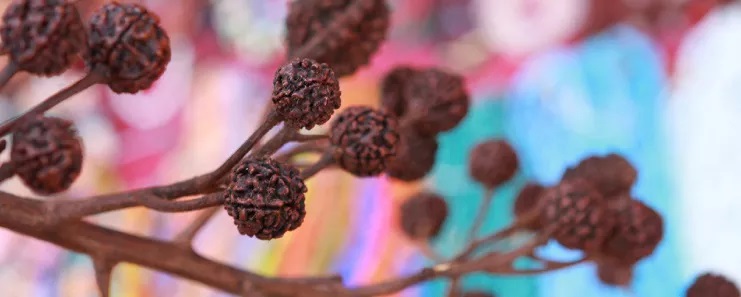
Why did Lord Shiva cry? We will soon find that these were not tears of sorrow. But first, let us look into the meaning of Rudra.
Rudra – The one who makes us cry
Rudra is another name of Lord Shiva in his aspect as the dissolver. The name Rudra has multiple meanings. In his commentary on the Vishnu Sahasranama, Adi Shankara interprets the name Rudra to be “the one who makes all beings cry at the time of cosmic dissolution”.
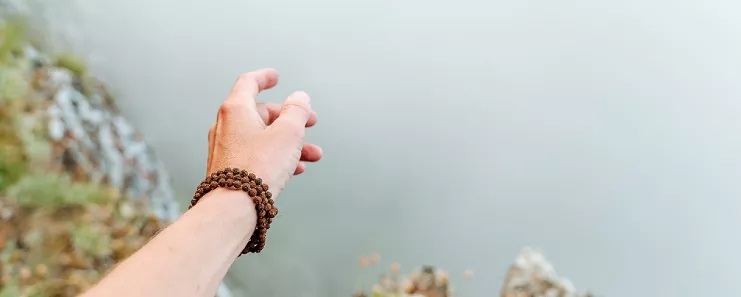
The Rig Veda states – Rukha Dravyati Iti Rudra. Rukha means misery and Dravyati means to eradicate. Rudra is the one who eradicates misery. In other words, Rudra transforms tears of sorrow into tears of bliss which is represented by the Rudraksha.
In the Svetasvatara Upanishad, the supreme consciousness (Brahman) is identified with Rudra. He is not just the destroyer, but the Supreme Being himself. Rud means “to cry” and Ra is the light, the divine consciousness, pervading the whole cosmos. When any being experiences divinity, the floodgates of the eyes open, leading to tears of joy. Rudra is that consciousness that brings tears of love, bliss, and gratitude. As per the legend, this was found to be true even in the case of the lord, himself. This leads us to the origin of Rudraksha, which means “the tears of Rudra”, aksha meaning tears.
The legend: Rudraksha, the tears of Lord Shiva
The story goes that once Lord Shiva was in penance for a long period, immersed in his blissful self. When he eventually woke up, tears fell on the ground from his eyes. The tears became a seed and grew into a tree, which came to be known as the Rudraksha tree. The seeds of this tree were bestowed special powers by Lord Shiva, which can assist us in our spiritual evolution. Rudraksha, the aksha of Rudra brings us raksha, protection, and helps us face hurdles on our spiritual journey. Shiva Purana states that the wearer of Rudraksha attains identity with Lord Shiva.
The scientific significance of Rudraksha
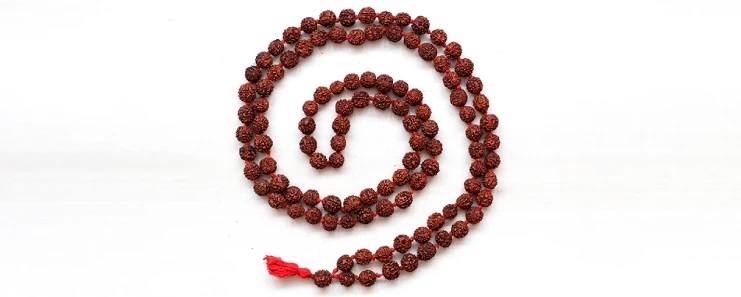
In the Vedas, Rudra is also associated with the wind and the storm. This wind is no ordinary wind but the cosmic wind. Scientific studies have revealed that the whole cosmos is pervaded by numerous particles that are continuously moving, and constitute interstellar matter. This matter leads to the destruction and creation of new celestial bodies. It is these particles that connect one object with another and keep the cycle of creation and recreation going. The winds caused by the movement of these particles are the cosmic winds. These winds are very powerful and make their howling sound in the universe, unperceived by the human ear.
Rudra as a deity in our Puranas is associated with this howling sound when he goes about his destruction spree. This destruction is not to be taken negatively but is for regeneration. Rudra represents these cosmic winds, the universal energy that is terrific and very powerful and constantly sweeps across the entire universe.
So, what is the connection between the cosmic winds and Rudraksha?
Rudraksha can also be said to be derived from the words Rudra Akarshana, where akarshana means to attract. Rudraksha is that which attracts Rudra or the cosmic particles, to channelize them throughout our body, like an antenna. These energies attracted by Rudraksha bring added vitality to our system, leading to health and harmony, while removing negativity.
Benefits of a Wearing Rudraksha
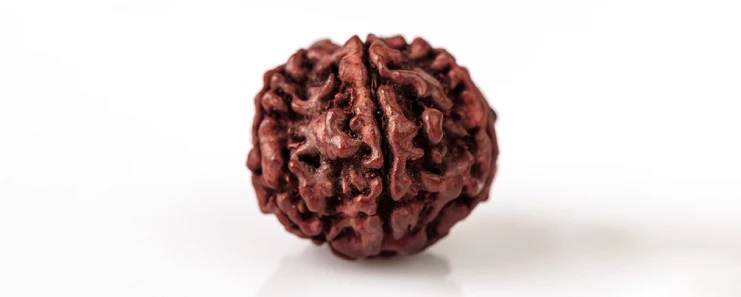
Research carried out by a team of scientists led by Dr. Suhas Rai of the Institute of Technology in Varanasi has revealed that Rudraksha seeds contain subtle electromagnetic atoms that influence our bodies.
So, what are the benefits of wearing a Rudraksha mala?
The wearing of Rudraksha mala (rosary), which consists of 108 beads, has multiple benefits.
- Rudraksha Acts as a protective shield for the body
- Radiates special energy that has a positive effect on the body, mind, and soul
- Mitigates negative karma
- Improves concentration
- Removes harmful planetary effects
- Brings peace and harmony
- Helps control stress and regulates blood pressure
- Balances the chakras and removes potential illnesses
Rudraksha Jabala Upanishad
The Rudraksha Jabala Upanishad is among the 108 minor Upanishads and is associated with the Sama Veda. It is in the form of a conversation between Lord Rudra and sage Sanatkumar. This Upanishad has interesting information on the Rudraksha and specifically speaks on the classification of the Rudraksha.
How many types of Rudrakshas exist?
Types of Rudraksha and their significance
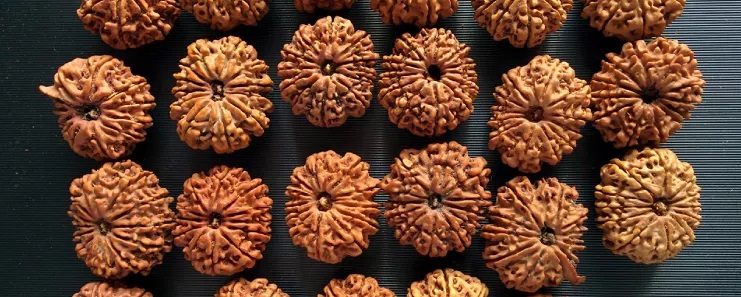
The Rudraksha comes in different mukhis, or faces, from 1 face to 21 faces. Of these 1 to 14 are easily available. Each has its significance.
1 Mukhi Rudraksha: Lord Shiva is the presiding deity of this Rudraksha. It brings awareness of the supreme consciousness.
2 Mukhi Rudraksha: Ardhanarishwar, the combined form of Shiva and Shakti, is the presiding deity of this Rudraksha. It brings unity and harmony and represents the Guru-shishya relationship.
3 Mukhi Rudraksha: Agni or fire is its presiding divinity of this Rudraksha. It facilitates the release from the bondage of past karma.
4 Mukhi Rudraksha: Guru is the presiding deity of this Rudraksha. It helps the seekers of higher knowledge.
5 Mukhi Rudraksha: Kalagni Rudra is the presiding divinity of this Rudraksha. This Rudraksha enhances our inner awareness, leading us to our Higher Self.
6 Mukhi Rudraksha: Lord Karthikeya is the presiding deity of this Rudraksha. It brings overall balance and emotional stability.
7 Mukhi Rudraksha: Goddess Lakshmi is the presiding deity of this Rudraksha. It brings new opportunities for wealth and also aids our health.
8 Mukhi Rudraksha: Lord Ganesha is the presiding deity of this Rudraksha. This Rudraksha facilitates the removal of obstacles.
9 Mukhi Rudraksha: Goddess Durga is the presiding divinity of this Rudraksha. It represents power and dynamism and helps us gain both, worldly enjoyments and liberation.
10 Mukhi Rudraksha: Lord Krishna is the presiding deity of this Rudraksha. It represents love and peace. As per the scriptures, this is one of the most powerful Rudrakshas.
11 Mukhi Rudraksha: The 11 minor Rudras are the presiding deity of this Rudraksha. It mitigates the negative influence of the planets.
12 Mukhi Rudraksha: The sun is the presiding deity of this Rudraksha. It brings radiance and power, helps us get rid of low self-esteem, leading to self-motivation.
13 Mukhi Rudraksha: Kamadeva is the presiding deity of this Rudraksha. It manifests attraction in us and also facilitates the awakening of kundalini and other powers (siddhi)
14 Mukhi Rudraksha: Lord Hanuman is the presiding deity of this Rudraksha. It represents courage and will power.
The 15 Mukhi Rudraksha to 21 Mukhi Rudraksha is not so commonly found and hence rarely used.
Gurudev offers insights into the Rudraksha
Thousands have been wearing Rudraksha Mala from ancient times as it has been a treasure trove of many spiritual potencies. Once Gurudev Sri Sri Ravi Shankar was asked about the Rudraksha seed at a satsang. The question, in particular, was focussed on whether not wearing a Rudraksha would invoke misfortune in a seeker’s life. Gurudev offered a deep insight, removing fear and anxiety for a seeker: “Never mind whether the Rudraksha you wear has one, or ten, or fifteen faces. Yes, it has some physiological and energetic effects. If the Rudraksha is good and it does something good for your physiology, then that is enough. If you feel like wearing it, wear it. Otherwise, it doesn’t matter if you don’t. The important thing is that you should be ek mukhi (one-pointed in devotion).”
Our ancient sages mastered the secrets of the breath and the mind. In many ways, this is our heritage. Unlock these secrets in these modern times, and keep the legacy alive at The Art of Living Meditation and Breath Program



